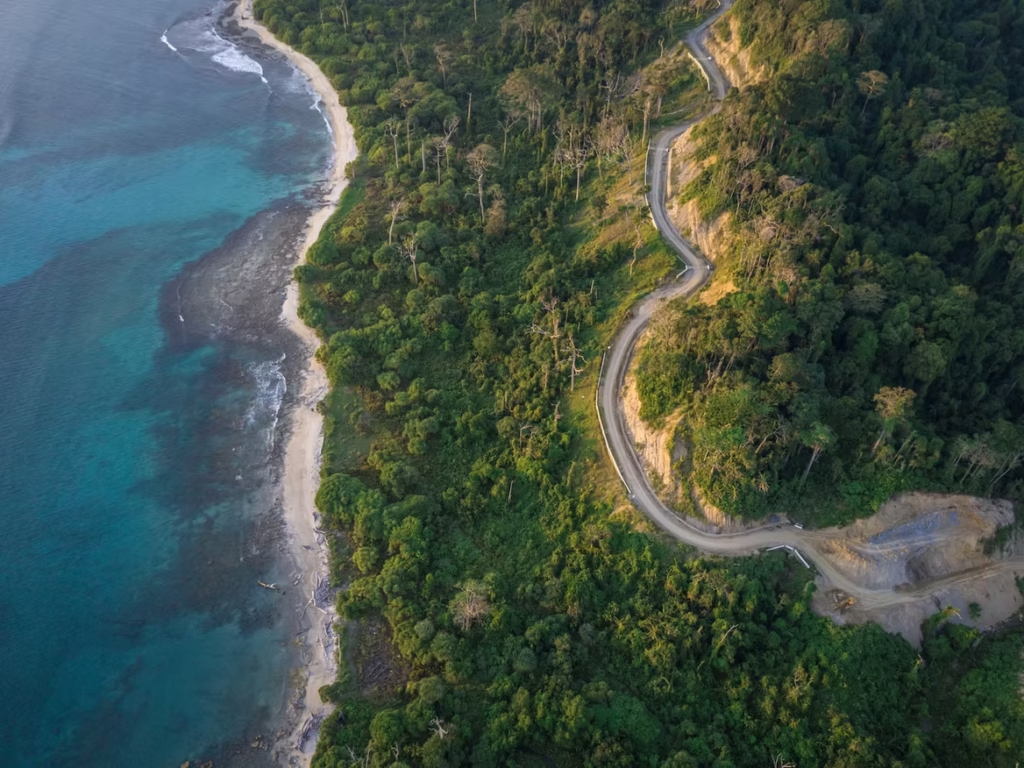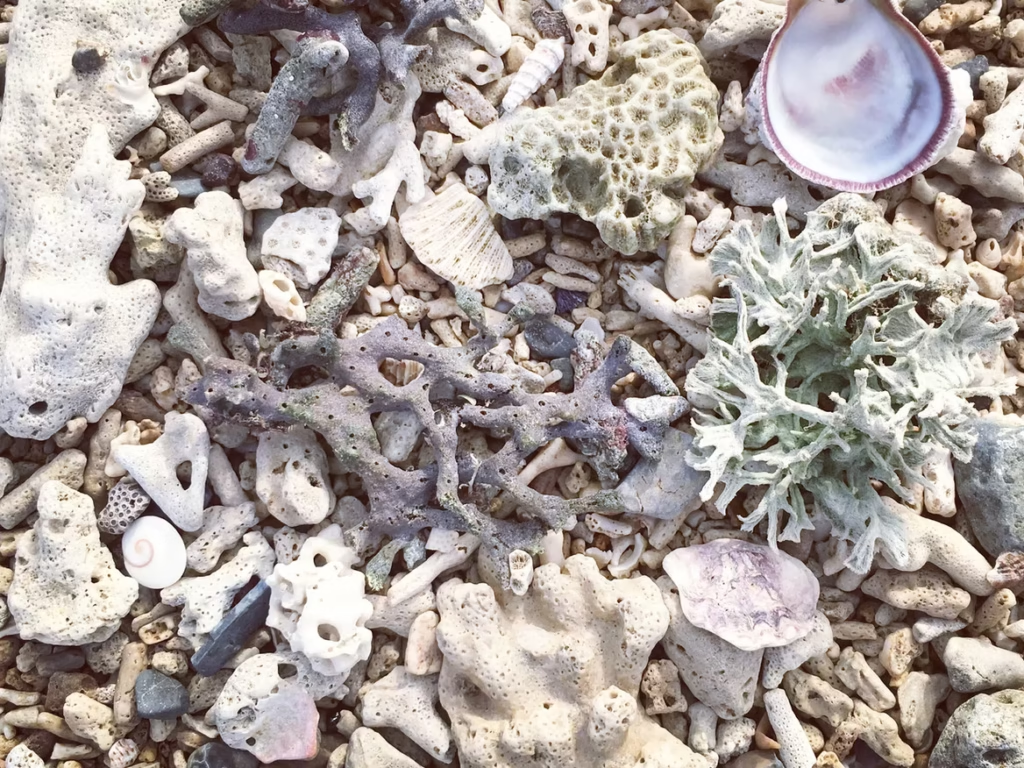How were Andaman and Nicobar Islands Formed?

The Andaman and Nicobar Islands’ story began eons ago, when nature’s craftsmanship developed over millennia. These islands emerged gradually from the delicate interaction of geological forces, like whispered secrets of time. Photo by Nabil Naidu on Unsplash The Andaman and Nicobar Islands began their voyage over 88 million years ago, when Earth’s continents were linked together in a completely different pattern. These islands were produced by the cataclysmic forces of tectonic movement, when massive movements beneath the Earth’s crust built the foundation of their existence. A fracture in the Earth’s crust caused a defining moment roughly 26 million years ago. This event signalled the islands’ physical separation from the Indonesian archipelago, paving the way for their distinctive evolution. Geological processes such as erosion, volcanic activity, and shifting sea levels sculpted the landscapes of the islands over millions of years. The islands eventually evolved into the paradisiacal sanctuary we know today, bathed in the soft caress of the Bay of Bengal and the Andaman Sea and that’s how Andaman and Nicoabr islands were formed. The sands, the rich foliage, and the vivid marine life all become weaved into nature’s exquisite tapestry. However, it was not until more recent times that the Andaman and Nicobar Islands finally established their position in human consciousness. These islands became a meeting place for many cultures and stories as a result of colonial exploration and the waves of human migration. The Andaman and Nicobar Islands are barely a blip in the grand scheme of Earth’s history, but their story is both timeless and unique. The development of the islands captures the grandeur of geological processes and the passage of time, resulting in the stunning archipelago that continues to captivate hearts today.
Are Andaman and Nicobar Coral Islands?

Travelers, scientists, and nature lovers have all been drawn to the mysterious allure of the Andaman and Nicobar Islands, which are tucked away in the Bay of Bengal’s embrace, adding them to the list of coral islands on the planet. Photo by Catrin Johnson on Unsplash What are coral islands? Coral islands, also known as atolls, are circular or horseshoe-shaped structures that can be found in warm tropical seas. They begin as volcanic islands, and when they settle or disintegrate, coral reefs build a protective barrier reef around them. When the original island vanishes, only the circular coral reef survives, becoming an atoll with a centre lagoon. These formations are well-known for their biodiversity and are attractive destinations for activities such as diving and tourism. The Maldives and the Great Barrier Reef are two examples. Andaman and Nicobar as coral islands Photo by Debal Das on Unsplash The Andaman and Nicobar Islands evoke pictures of gorgeous white sand beaches, waterways teaming with colorful marine life, and lush tropical forests at the mere mention of them. These islands are known for being coral islands and are distinguished by their breathtaking natural beauty. In essence, coral islands are land masses that have been created by or have had a significant impact from the accumulation and expansion of coral reefs. Coral reefs in the vicinity of the Andaman and Nicobar Islands are fascinating ecosystems that are essential to preserving marine biodiversity and guarding against erosion of coastal areas. Coral polyps, which are minuscule marine animals that form colonies, gradually build calcium carbonate skeletons that act as the foundation for coral reefs. These coral polyp colonies develop and link throughout time, building complex structures that provide as habitat and shelter for a wide variety of marine creatures. The Andaman and Nicobar Islands’ coral reefs are noteworthy not just for their breathtaking beauty, but also for the variety of species they are home to. Corals can flourish in the warm, clear seas surrounding these islands, creating a vibrant underwater tapestry of colors and patterns. The variety is astounding, ranging from hard corals that construct the strong foundation of the reefs to delicate soft corals that swing with the currents. The coral reefs on the islands are not only beautiful to look at, but they are also an essential part of the marine environment. Numerous fish species use them as nurseries, and they shelter and preserve young marine life. The food chain is subsequently maintained, which benefits larger predatory species and even human communities who depend on the waters for food. These sensitive ecosystems, despite being beautiful and important, are under threat from a variety of human activities. Coral reefs all across the world, including those near the Andaman and Nicobar Islands, face serious threats to their health and survival from pollution, overfishing, and ocean acidification brought on by climate change. To ensure the preservation of these vulnerable ecosystems for future generations, efforts are being made to increase awareness of the significance of protecting them and putting sustainable practices in place. The Andaman and Nicobar Islands are coral islands, demonstrating the spectacular beauty and critical role that coral reefs play in the environment. A magnificent world exists beneath the waves thanks to the colorful corals that characterize the underwater sceneries. It is our duty as stewards of the environment to protect these delicate ecosystems and make sure that the alluring coral reefs of the Andaman and Nicobar Islands survive so that future generations can admire and value them.
The Andaman & Nicobar Islands Railway Station

The Andaman and Nicobar Islands stand as a tribute to the astounding grandeur of nature, nestled in the Indian Ocean. In addition to capturing travelers’ attention, they also hide a hidden gem: the Andaman and Nicobar Islands Railway Station. The station serves as a portal to an exquisite world where the beat of trains is accompanied by the melody of the waves. Photo by paolo candelo on Unsplash A special mix of cutting-edge engineering and unmatched beauty can be found at the Andaman & Nicobar Islands Railway Station. The station is a gateway to an island paradise since it was carefully designed to blend in with its surroundings rather than stand out. A light breeze bringing the salty aroma of the ocean greets you as you step onto the platform. With wooden accents and thatched covering that honor the traditional handicraft of the islands, the station’s architecture reflects the aesthetics of the area. Platforms at the station look out into a stunning scene of coconut trees lining pristine white beaches and creating a lullaby of rustling leaves. Beyond there is the Andaman Sea, which has clear seas and coral gardens that serve as a sanctuary for aquatic life. Visitors frequently struggle between admiring the magnificent maritime painting and the allure of the station. The eco-aware culture of the Andaman & Nicobar Islands Railway Station is what actually sets it unique. The station’s environmental impact has been reduced with great attention by the architects. A self-sustaining energy cycle is ensured through the use of renewable energy sources, such as discretely integrated solar panels into the design of the station. Systems for collecting rainwater assist in maintaining the lush flora that surrounds the station and support the delicate environment of the islands. The station is an important component of the islands’ cultural fabric in addition to being an architectural marvel. The friendly and helpful station workers exemplify the spirit of the islands. They are more than simply conductors and attendants; they are storytellers who enlighten passengers about the culture and history of the islands. At the station, spontaneous folk concerts are frequently found, with local musicians filling the air with tunes that have reverberated throughout time. The Andaman and Nicobar Islands Railway Station serves as a poignant reminder of the strong bond between people and nature in a world dominated by technical developments. It serves as evidence for the idea that building may respect the natural world while opening doors to adventure and learning. Prepare to be charmed by this station’s appeal, humbled by its surroundings, and welcomed as a fellow traveler into the Andaman and Nicobar Islands as you set off on your adventure there.
Andaman and Nicobar Islands – Do you need a passport?

Navigating the Andaman and Nicobar Islands’ shores invites visitors to explore a region of stunning beauty and distinct charm. However, the topic of whether a passport is required to set foot on these heavenly shores frequently arises in the minds of travellers. For visitors from within India, the Andaman and Nicobar Islands give a cordial welcome that does not require a passport. As Indian union territories, these islands welcome Indian people with open arms, allowing them to enjoy their pristine beaches, lush landscapes, and teeming marine life without the requirement for an international travel document. Photo by Blake Guidry on Unsplash If one’s journey to these islands begins on foreign soil, the story takes a different path. For overseas travellers, the familiar companionship of a passport, coupled by the necessary visa arrangements, becomes a requirement. The Andaman and Nicobar Islands have their own distinct charm, but they also follow worldwide travel paperwork standards. Because the islands are an important part of India, domestic travellers can visit this haven without being hindered by passport requirements. Those embarking on a global voyage to these tropical havens, on the other hand, see the passport as the key to unlocking the treasure trove of their beauty. The Andaman and Nicobar Islands stand as a tribute to the range of human experiences in the delicate dance between travel prohibitions and the appeal of exploration. They welcome Indians with open arms and extend an invitation to international travellers armed with passports to learn their enthralling mysteries.

